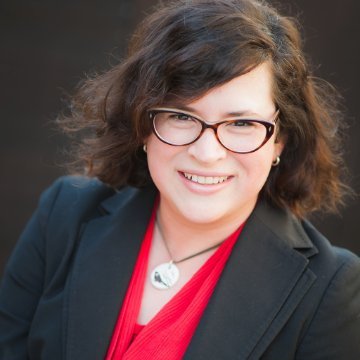Staci Baird, Global Press Journal
At the time of this interview, Staci Baird was the engagement editor for the Global Press Journal.

Can you describe what the Global Press Journal does?
Global Press Institute is a social enterprise that trains women in developing media markets to be journalists. We employ them to become professional journalists. We employ 100 percent of our graduates as reporters for our award-winning publication, Global Press Journal. Then, Global Press News Service helps expand our reach through partnerships with media organizations and brands around the world. We don’t ever send journalists from the United States to another country to cover a story. I think that’s really key for us because we’re helping these communities where we have trained journalists to tell the stories of their own communities and to tell us what the story is. We get a different set of voices than anything else you might read in other international or national coverage.
What are some of your favorite stories that Global Press has covered?
Two of my favorite GPJ stories are from the Democratic Republic of Congo [DRC]: “In DRC, Electrical Shortage Powers Demand for Cellphone Charging Shops” and “Widow Fights Sexism, Earns Respect and Pride Repairing Life-sustaining Water Jugs in DRC.” I love stories about entrepreneurs who are starting their own businesses and developing their own solutions to problems in their communities. These aren’t the kind of stories you generally see about the DRC.
What are your job duties as engagement editor?
My day-to-day job is sharing Global Press Journal stories on social media, but it’s more than just crafting the perfect tweet or the perfect Facebook post. We’re thinking a little bit deeper about what that term “engagement” really means for us and using our stories to start conversations. My challenge this year is increasing our readership across the United States and the world. We’re experimenting with a lot of new and exciting technologies and techniques for reaching both local audiences and global audiences.
Do you run into any barriers regarding language or have any Google translate mishaps?
We tweet in English, Spanish and French. Sometimes we’ll get a tweet back in a language I can’t even decipher. Luckily, we have our reporters and translators to help me translate. There’s also a cultural consideration to think about as to why some tweets get more clicks than others or why some stories generate more conversation. So that’s been interesting for me to learn. The support for different fonts and characters on the web can be really challenging. But we’re working on expanding our language reach.
We’ve seen how Snapchat is used by many press outlets to keep readers invested and in the moment. What do you think the next big social media trend/app will be?
I’m no social media savant, but I think as technology continues to develop and evolve, and as more people gain access to the Internet, there will be more real-time conversations happening between people all over the world. This socialization of news and information is encouraging because I believe accuracy and verification, and thus journalism, will always be a part of it.
— Cristiana Caruso '16